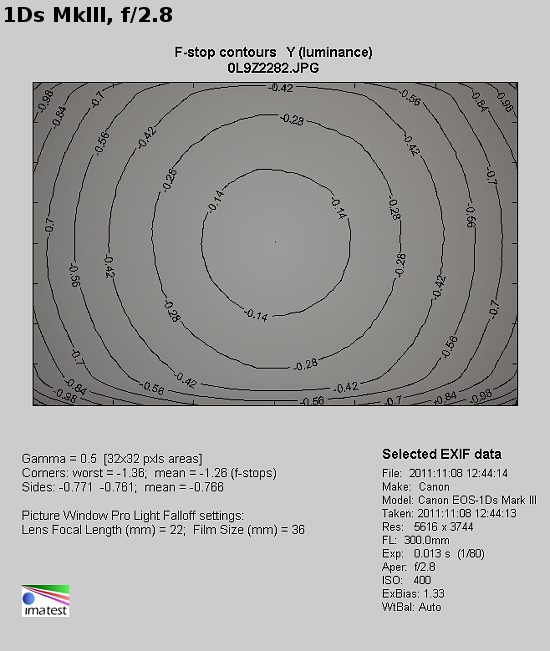Canon EF 300 mm f/2.8 L IS II USM
8. Vignetting

Our measurements confirm it completely. Even at the maximum relative aperture the brightness loss in the frame corners can hardly be considered bothersome because it is only 17% (-0.54 EV). The problems disappears completely already by f/4.0 where the light fall-off reaches only 3% (-0.17 EV).
Please Support UsIf you enjoy our reviews and articles, and you want us to continue our work please, support our website by donating through PayPal. The funds are going to be used for paying our editorial team, renting servers, and equipping our testing studio; only that way we will be able to continue providing you interesting content for free. |
- - - - - - - - - - - - - - - - - - - - - - - - - - - - - - - - - - - - - - - - - - - - - - - -
Now let’s check what the situation is for a more demanding full frame sensor.

There are of course more problems but, taking into account the size of the detector, the results still remain decent. At the maximum relative aperture the vignetting amounts to 35% (-1.26 EV) and can be perceived without any problem. It decreases already by f/4.0 to the level of 15% (-0.46 EV), though, becoming definitely less problematic. The vignetting disappears almost completely by f/5.6, where we had the value of 7% (-0.22 EV).
 |






